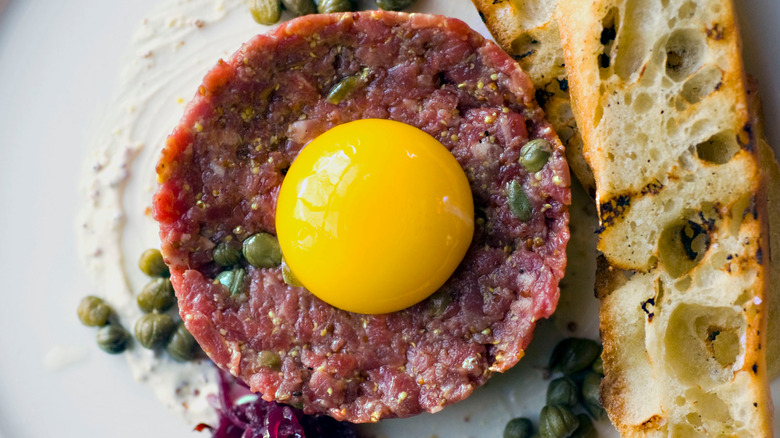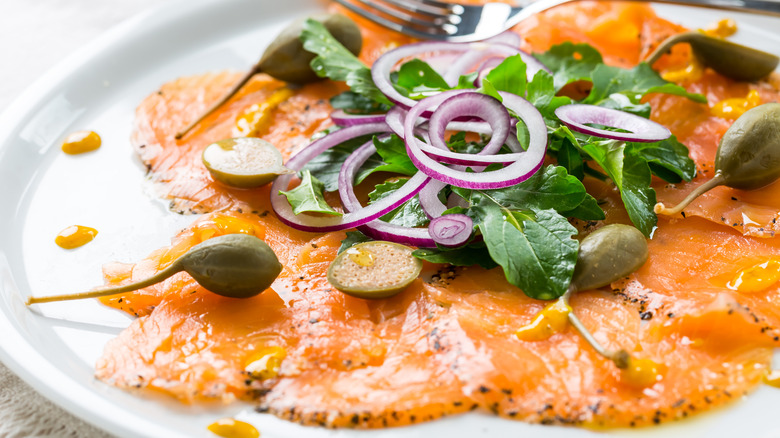What's The Difference Between Tartare And Carpaccio?
No one likes to feel like they don't know what's what when they go to a nice restaurant. Ask too many questions, and that insecurity starts to rise. Ask too little, and you end up having no idea what is on the plate that just dropped in front of you. Dishes like tartare and carpaccio are delicious, fresh, and varied, but what is the difference really? To put it simply, it has to do with how the meat is cut.
Both preparation methods fall under the term "crudo," which means "raw" in Spanish and Italian. A crudo is usually made with meat or seafood, though there are vegan and vegetarian takes, and dressed with oil, citrus, vinegar, herbs, and so on.
In a carpaccio, the protein is very thinly sliced or pounded out. Typically, it is arranged on a plate in a single layer and then drizzled with oil or an acidic component.
In a tartare, the raw protein is finely chopped and then mixed with a dressing. Often you will see tartare plated in a cylindrical shape using a pastry ring to mold it. A classic steak tartare dresses the meat with mustard, cornichons, capers, shallots, and a little lemon or vinegar. Usually, this dish is topped with a creamy raw egg yolk making for a really dramatic presentation. Tuna tartare is another common preparation and often takes inspiration from pan-Asian flavors. Gordon Ramsay's tuna tartare recipe, for example, uses ginger, sesame oil, and soy.
Are there risks to eating these raw dishes?
How safe is it to eat carpaccio? Is steak tartare safe to eat? The short answer is, it depends. Eating raw or unpasteurized foods can lead to food-borne illnesses, especially for those that are immunocompromised, so there will always be some level of risk when consuming a crudo.
A safely made crudo starts with the protein itself. Buying meat from a reputable, small-scale butcher or seafood monger makes all the difference. They know exactly how fresh the product is and break it down themselves. Any bacteria on a whole piece of meat is going to be found on the outside where the meat came in contact with air and other surfaces, so some restaurants and home cooks will sear or torch the outside of the cut to kill this bacteria. Additionally, fine dining restaurants where these dishes are common adhere to meticulous health and food safety standards to ensure they are serving raw food as safely as possible. Keeping proteins as cold as possible is key. Using designated cutting boards and knives decreases the chances of cross-contamination. Preparing the dish quickly to minimize the time the plate is sitting before being consumed also reduces risk. While eating any raw or unpasteurized food is not without risk, there are also many techniques that allow these foods to be enjoyed without too much worry.

